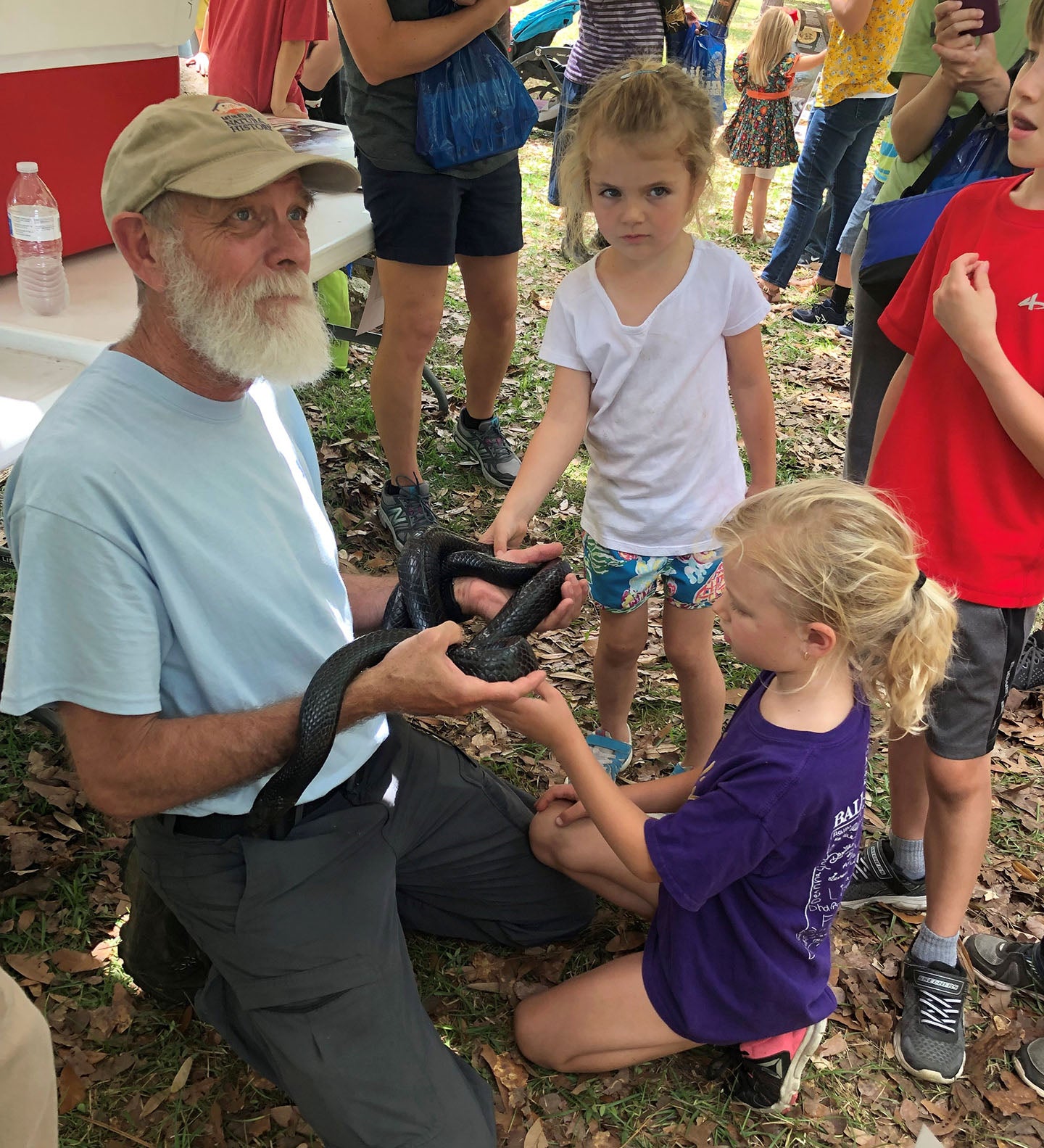The Alabama Division of Wildlife and Freshwater Fisheries (WFF), in partnership with the U.S. Fish and Wildlife Service (USFWS), the U.S. Forest Service, and Auburn University, will host the 3rd annual Eastern Indigo Snake and Wildlife Festival at the Conecuh National Forest Open Pond Recreation Area on May 1, 2020, from 9 a.m. to 4 p.m.
The festival celebrates the Eastern indigo snake, the longest nonvenomous, native snake species in North America. In addition to learning about the Eastern indigo, attendees will learn about the longleaf pine ecosystem including the gopher tortoise and the hundreds of other species that use its burrows. Attendees will also have the opportunity to interact with live animals as well as biologists and foresters from various state, federal, and private organizations. Families, school groups, and visitors are welcome.
School groups must sign up with the Covington County Extension Office at (334) 222-1125. Sign up is on a first come, first served basis. For more information about the Open Pond Recreation Area, visit https://www.fs.usda.gov/recarea/alabama/recarea/?recid=30113. For additional information about the festival, contact WFF Habitat and Species Conservation Coordinator Traci Wood at (334) 398-3726.
ABOUT THE EASTERN INDIGO SNAKE
The Eastern indigo snake is a threatened and protected species throughout its range along the Gulf Coast of the U.S. Decades ago, the species disappeared from Alabama in step with the loss of its natural habitat – longleaf pine forests.
In recent years, Eastern indigos have been released in the Conecuh National Forest in south Alabama with the goal of creating a viable population and addressing the USFWS recovery plan for the species. The first known, wild Eastern indigo snake was recently discovered at Conecuh National Forest. If the Eastern indigo snake reestablishes a viable population in Alabama, a piece of the state’s natural history will be restored.
The most notable features of the Eastern indigo snake are the iridescent, blue-black color of its head and body, and a reddish-orange color on the throat, cheeks, and chin. It is the longest snake in North America, reaching lengths of up to 8 ½ feet. Being at the top of its food chain, indigos rule the forest. Compared to other snakes, the Eastern indigo’s diet consists of some surprising items including venomous snakes like the copperhead and rattlesnake. A healthy population of Eastern indigos in a longleaf pine forest is an indication of an ecologically balanced forest.
To learn more about the Eastern indigo snake in Alabama, visit www.outdooralabama.com.
The Alabama Department of Conservation and Natural Resources promotes wise stewardship, management and enjoyment of Alabama’s natural resources through four divisions: Marine Resources, State Lands, State Parks, and Wildlife and Freshwater Fisheries. To learn more about ADCNR, visit www.outdooralabama.com.
###






